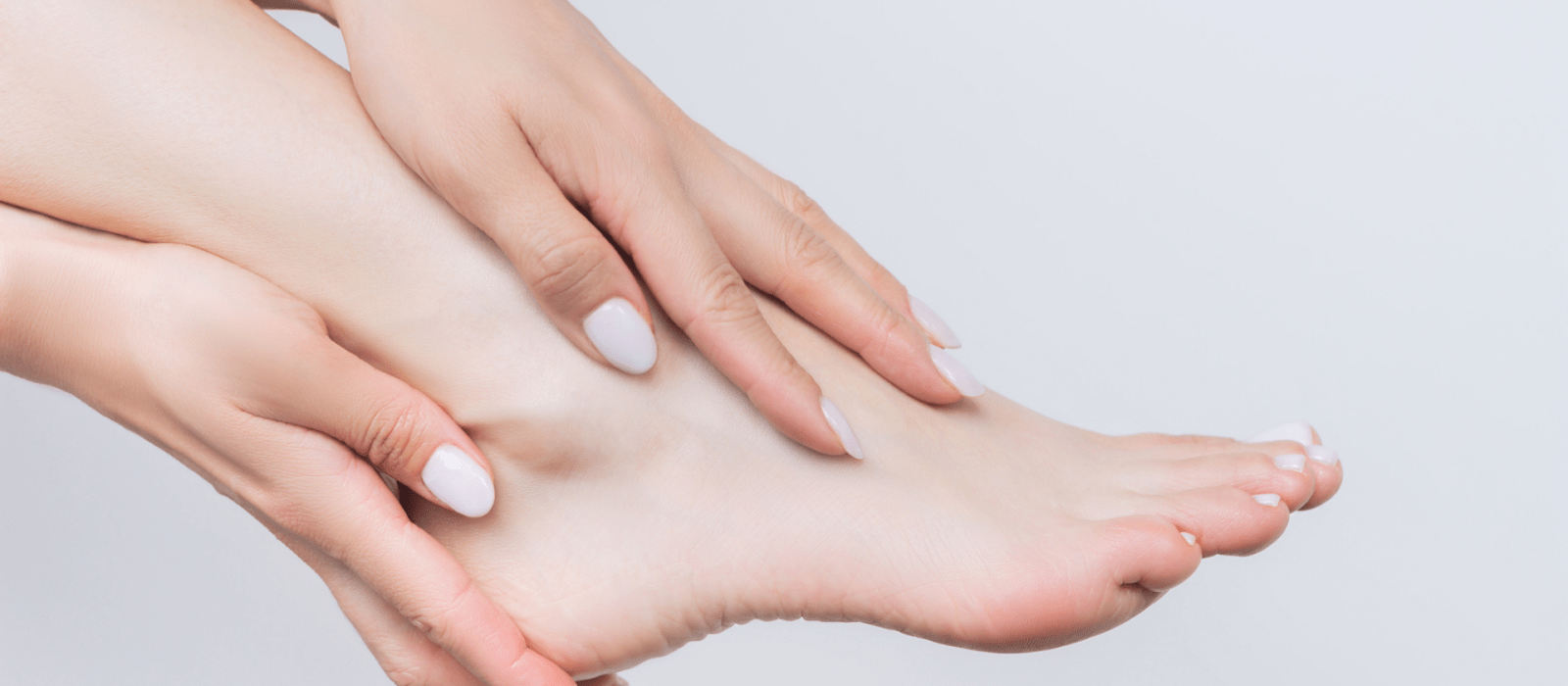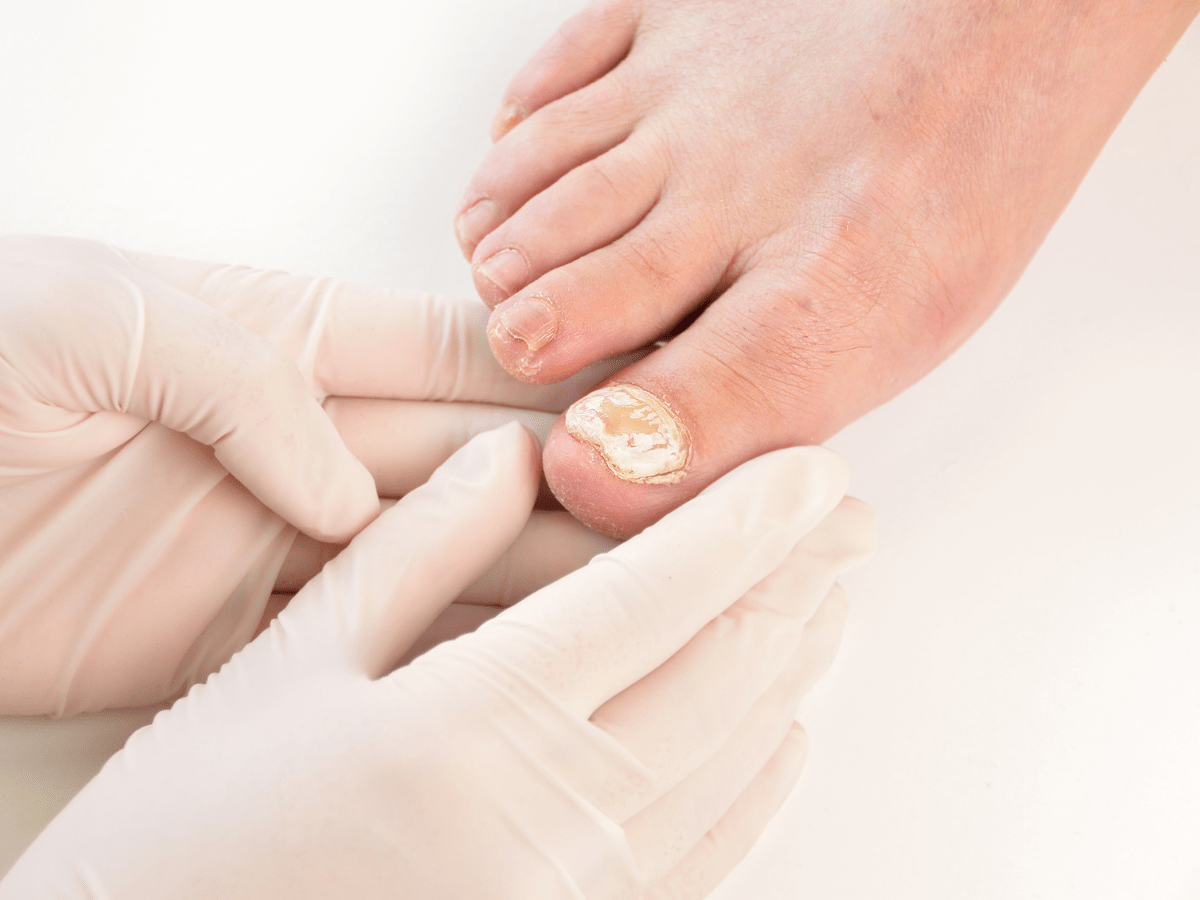About Fungul Nail Infection (Onychomycosis)
Onychomycosis is an infection of the nails caused by fungus. This infection most commonly appears with thickened nails and yellow discoloration of the nails.
Onychomycosis is an increasingly common disorder. It accounts for 20% of all nail diseases. It typically only affects adults. About 50% of those over the age of 70 suffer from it, proving that the risk increases with age.
Causes
Onychomycosis is a fungal infection. It is spread by direct contact with the fungus. It is typically most common in warm, moist environments.
Risk Factors
The infection is more common in toenails than in fingernails. You may be at a higher risk for this infection if:
- You wear shoes or boots that make your feet hot and sweaty.
- You walk barefoot in public areas such as pools or showers.
- You are over the age of 70.
- You have poor blood circulation.
- You have psoriasis.
- You have a weakened immune system.
- You have a family history of onychomycosis.
- You have prolonged contact with water.
- You have prolonged contact with latex gloves.
- You are a smoker.
Symptoms
You may have onychomycosis if one or more of your nails are:
- Thickened
- Brittle, crumbly or ragged
- Distorted in shape
- Dull, with no shine
- A dark color, caused by debris building up under your nail
Infected nails also may separate from the nail bed, a condition called onycholysis. You may feel pain in your toes or fingertips and detect a slightly foul odor.
Diagnosis
Your doctor will examine your nails, and can often make a preliminary diagnosis. There are additional laboratory tests that are used to confirm the diagnosis, such as looking at sections of nail under a microscope or growing fungi from scrapings of the nail. It might be a few weeks before your doctor gets the results of the laboratory tests.
Frequently Asked Questions
What is Onychomycosis?
This fungal nail infection happens when a fungus attacks your toenail or the nail bed, causing discoloration, thickening, brittleness and cracking of the nail. If you are healthy, onychomycosis is more of an unattractive nuisance than a problem. However, if you have diabetes or a weakened immune system, this type of infection could lead to serious complications if left untreated.
What Causes It?
While yeasts, molds and different kinds of fungi can cause onychomycosis, it’s usually the result of the same type of fungus associated with athlete’s foot. The fungi that cause onychomycosis thrive in warm and moist places, such as showers and pools. To limit exposure, avoid walking barefoot in these places, and do not share personal items such as footwear or nail clippers.
Who is More Likely to Get Onychomychosis?
- People over the age of 60
- Men
- People with diabetes or immune system deficiencies
- People who have a nail injury
- People who live or work in a location that is hot and humid
- People who wear shoes that make their feet damp or sweaty
What Are The Symptoms?
A common sign of onychomychosis is one or more toenails that have turned yellow or white, thickened and split. The thickness of the nail may cause discomfort and pain, and the infection could spread to other toes.
When Should I See My Doctor?
Onychomycosis won’t go away on its own and it can spread to the other toes. If you’re in good health, taking action is up to you. However, if you have diabetes or an immune system deficiency, onychomycosis can lead to serious complications and should be treated as soon as symptoms are noted and diagnosed.
How is Onychomycosis Treated?
Over-the-counter treatment options include antifungal creams, lotions and topical treatments, although their effectiveness is less than that of prescription treatments. The ideal way to treat onychomycosis is to use a variety of products. Further, care needs to be taken to keep shoes clean, dry and free of harmful bacteria. Shoes can be treated with a UV shoe sterilizer, such as the SteriShoe.
How Can I Prevent It?
The best way to prevent fungal toenail infections is to keep the feet clean and dry. Toenails should be kept short and be cut straight across. Feet should be thoroughly dried after a bath or shower, and absorbent cotton socks should be worn to keep feet dry and well-ventilated.
Visit Virginia Dermatology & Skin Cancer Center
Our team provides thoughtful, expert care for all your general, surgical and cosmetic dermatological needs. We are proud to offer the most advanced dermatological services in Norfolk, Suffolk, Newport News, and surrounding areas.


